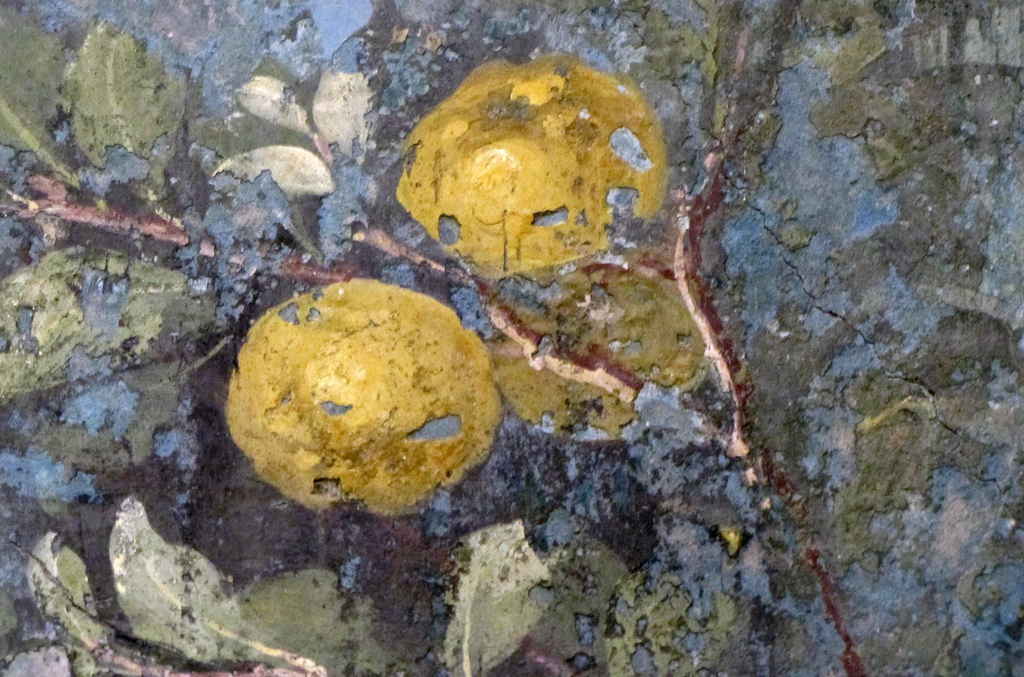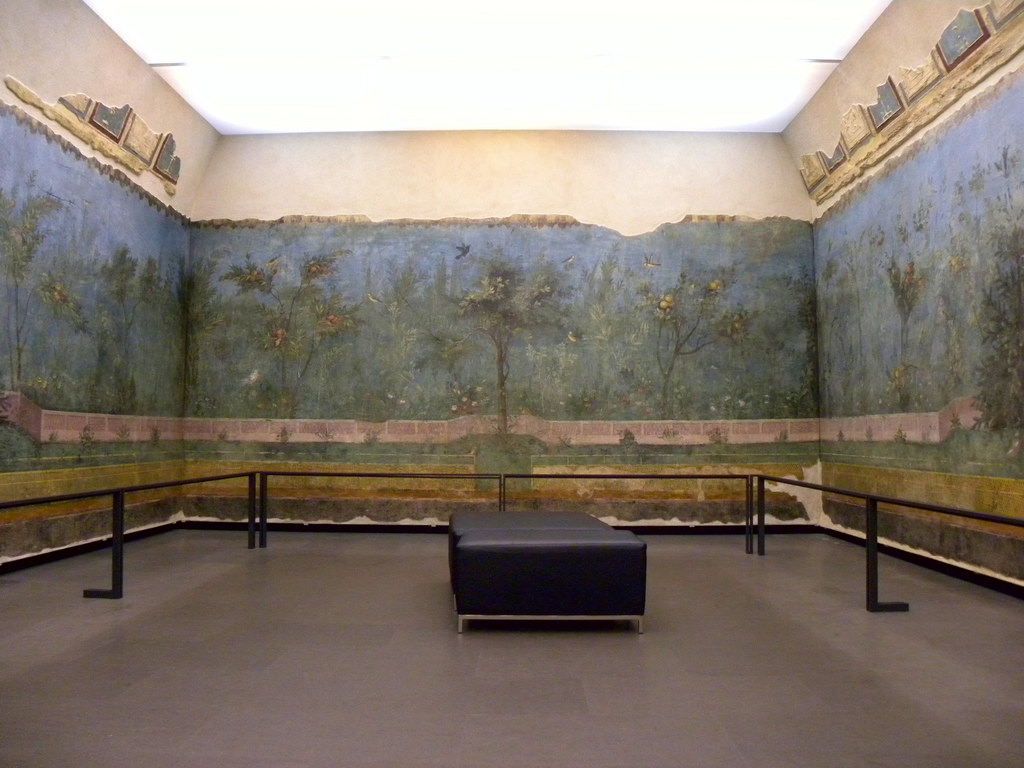The Pax Romana, conceived of by the Emperor Augustus, who was married to Livia Drusilla, as the Roman Empire’s political and social rebirth, was promoted by notions of prosperity, peace, and familial stability. Famous works such as the Ara Pacis symbolized this propaganda to the public, where images of the imperial family and flourishing acanthus leaves were visible to the Roman people. Yet, such public displays were not the only Augustan-era works to embody the Empire’s new mentality. Lesser known, less public works, such as the Triclinium at Livia’s Villa, today called Livia’s Garden Room, also symbolically promoted this new vision.
Found just outside of Rome at Prima Porta, the same country villa at which the Augustus Prima Porta was found, the fresco room, now housed in the Museo Nazionale Romano, dates back to the early first century B.C.E. Through the use of fresco and trompe-l’œil, a verdant landscape transforms the entire room into a prosperous and peaceful space. A fence separates the tamed, groomed garden within from the wildly vegetative landscape beyond it. Various trees are placed at central points along the fence, and diverse species of birds flutter across the sky. Although less overt than Augustus’ public works, the symbolism of Livia’s garden room and its promotion of fecundity and natural and social order cannot be ignored in light of the Pax Romana.
Further Reading:
Gabriel, M. M. Livia’s Garden Room at Prima Porta, (New York, 1955).
References:
Kellum, Barbara A. “The Construction of Landscape in Augustan Rome: The Garden Room at the Villa ad Gallinas.” The Art Bulletin, Vol 76, No. 2 (June, 1994): 211-224.
Wall, Livia’s Garden Room, fresco, 30-10 B.C.E.
Detail of Acanthus Leaves, Ara Pacis, marble, 13-9 B.C.E.
Detail of Imperial Family, Ara Pacis, marble, 13-9 B.C.E.
Detail of Fruit, Livia’s Garden Room, fresco, 30-10 B.C.E.
Detail of Bird, Livia’s Garden Room, fresco, 30-10 B.C.E.
Augustus Prima Porta, marble, 1st century C.E. copy of an bronze original from ca. 20 B.C.E.







